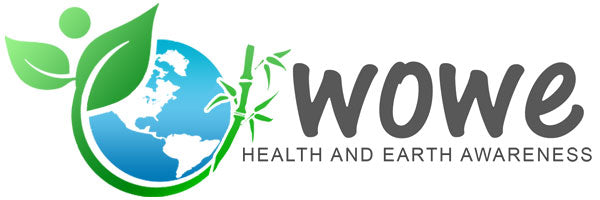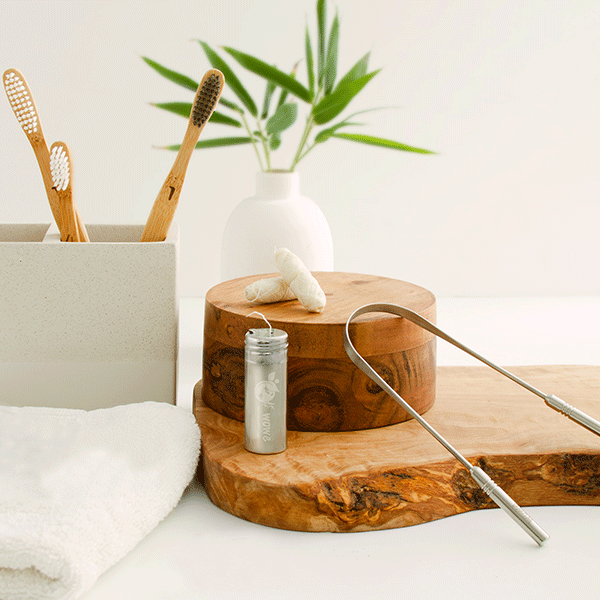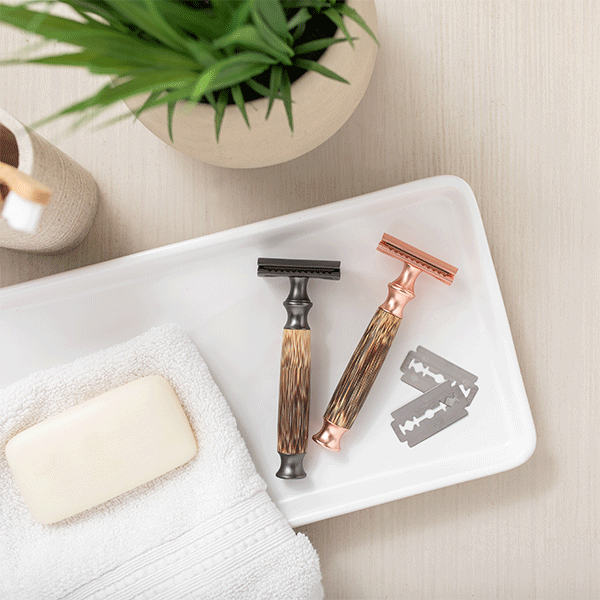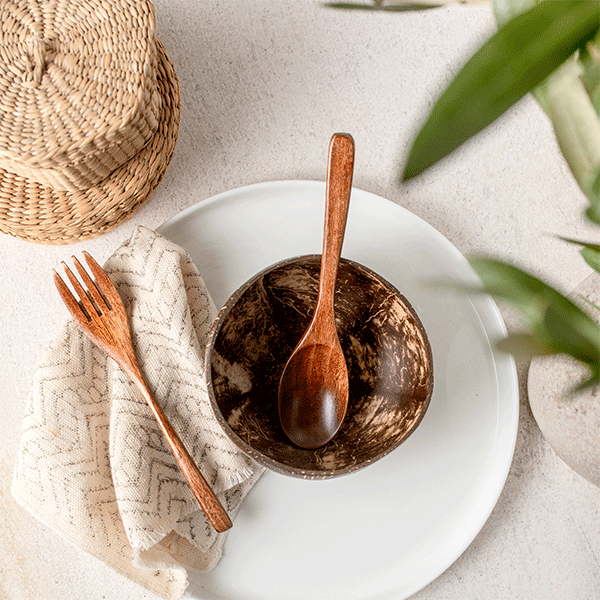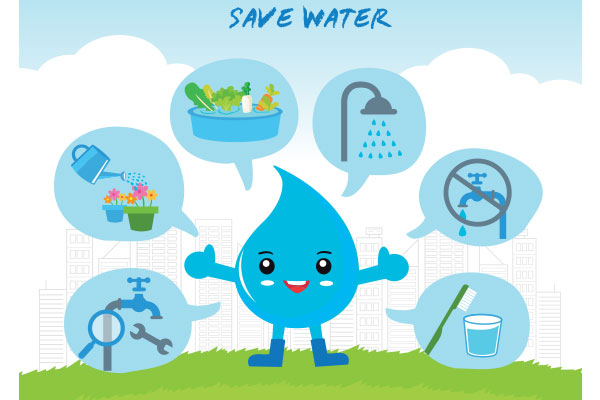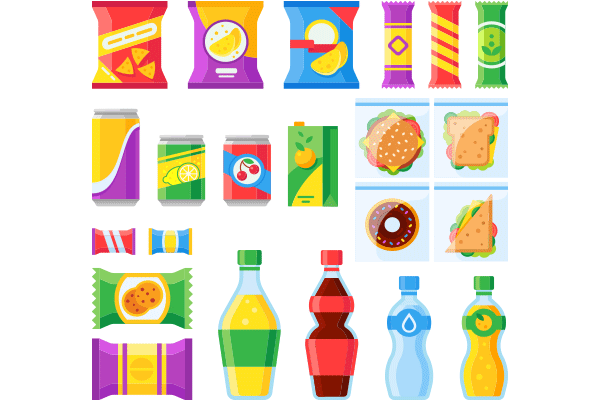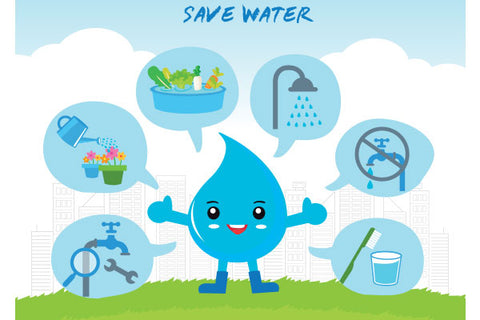
We are well into the month of June with July just around the corner, which means that it is hot. Summer weather means lots of fun outdoor activities, but with the hikes and long evenings over the barbeque comes a whole lot of sweat, which means a whole lot of water! With everyone drinking a little more H2O at the moment, we thought it would be the perfect time to talk about a pretty serious topic: water.
Water is, believe it or not, not available in unlimited supplies, despite being technically a renewable resource. While water does replenish, overuse negates this, and when millions of people overuse the water supply, the effects are devastating.
Yes, our planet is mostly water, in fact, 71% of Earth’s surface is covered in the stuff, but only 3% of that water is actually fresh - meaning it doesn’t come from an ocean. Of that 3%, 70% is trapped in glaciers and ice formations, leaving only about 30% (or 1% of all water on Earth) for human consumption. Freshwater is what we all drink and use in our homes daily, so we are pretty reliant on that 1%, and wasting water directly impacts whether others around the globe are able to water their crops, feed their livestock, or even have a drink of water.
If saving a few drops here or there doesn’t feel like much to you, believe us when we say that it most certainly does. Every drop in the bucket contributes to the whole, which is why today we are bringing you 6 simple tips for saving water in your own home.
6. Install a Low-Flow Shower Head
The bathroom is inarguably one of the biggest culprits when it comes to water waste, which is why we’re going to be targeting the shower with our first two tips! The average showerhead puts out between 2.5 and 5 gallons of water per minute, which means that the average 10 to 15-minute shower could be using anywhere from 25 to 75 gallons of water during each shower.
To put this into perspective, it would take the average person about 120 days to drink 75 gallons, which you wash down the drain in just 15 minutes.
Luckily, there are people just as concerned about water waste as we are, and they’ve worked to design low-flow showerheads that dispense fewer gallons per minute without impacting water pressure. Low-flow and WaterSense labeled showerheads must dispense less than 2 gallons of water per minute, with some reaching as low as 1.25 gpm. By installing a low-flow showerhead, you could save dozens of gallons of water for each shower you take without doing anything differently or compromising the feeling of good water pressure.
5. Keep Showers Short
Remember how we mentioned that bathrooms are one of the biggest culprits when it comes to water waste? Well, long-shower-lovers beware, we’re coming for you! Who doesn’t love standing under a shower for a long time, enjoying some music in the background, and getting their scrub on? We can all agree that showers are great, which is why it is so important to conserve water.
There are plenty of people around the world who have limited access to water, meaning they often go without proper baths or showers for months on end. There are a lot of reasons for water being inaccessible to people around the world, and we will touch on those topics another time, but if you want to start making a difference from your own home, you’ll want to take a close look at howyou and your household consume water.
If you are standing in the shower for 15 to 20 minutes, you are likely no longer showering and instead just enjoying the feeling of the shower. As we said: we get it. Showers are great, but having enough water to go around is also great, which is why you should strive to keep your showers short.
By installing a low-flow showerhead and keeping your showers to 5-10 minutes, you could go from using 75 gallons of water per shower to just 10.
4. Stop Running Faucets Endlessly
This is a super bad habit, but lots of people don’t even realize they do it. Turning on a tap then leaving it to run incessantly is obviously bad for the environment and obviously wastes water, but that doesn’t keep us from forming this bad habit. Whether it be while you are grabbing ingredients from your pantry before you cook something that needs water, while you are brushing your teeth, while you are getting a glass of water, or simply because someone called while you were in the middle of turning on the tap, you need to stop letting your faucets run endlessly.
If you are not actively using the sink and the water coming out of its faucet, the faucet should be turned off. Leaving your faucets running wastes gallons of water per minute and is probably running up your water bill. To save the Earth and your wallet, start making an effort to turn oof the tap.
3. Collect Rainwater
Rainwater is freshwater, and while it may not always be safe to drink collected rainwater, it is perfectly safe for lots of chores and projects around the house. If you have an area where you are able to collect rain or runoff from your roof, try setting up a simple rain barrel. Rain barrels can be found at most major hardware stores, or you can even start out just using a large container you have lying around the house.
As you begin to gather a good amount of rainwater, you can begin to use it for things like watering houseplants, keeping the lawn hydrated, washing dishes, adding to your compost pile, washing windows, and so on. You can even use rainwater to flush your toilets! All said and done, using collected rainwater could help you reduce your household water use by 70%, which means a lower water bill. On top of it all, you’ll feel good knowing you are giving back to the planet.
2. Drink Tap Water
Plastic water bottles are notoriously bad for the environment, which is why you’ve probably already heard a million times that you should stop purchasing bottled water. Well, get ready for a million and one times, because we’re here to tell you that you need to stop purchasing bottled water!
Besides having devastating effects on the planet when disposed of incorrectly, plastic water bottles themselves are a major source of water waste. Producing a standard plastic water bottle requires nearly three times more water than the finished product can actually hold. A standard one-liter bottle of water, for example, takes three liters of water to manufacture - which is pretty clearly a waste of valuable resources.
Drinking tap water wastes zero water, unless you forget to turn the tap off. Most of us have the privilege to have access to clean, drinkable tap water, something that is considered a luxury in many areas of the world, and even in communities within the United States. If you have access to clean tap water, take full advantage and discontinue your purchasing of pre-packaged water entirely. Drink tap water exclusively, and bring a reusable water bottle with you should you need to hydrate on the go.
1. Use Your Dishwasher
There is a common misconception that washing dishes by hand saves water, but in reality, it is the dishwasher you should be using if water conservation is your concern. Washing dishes by hand uses approximately 2 gallons of water per minute, whereas washing dishes in an Energy Star rated dishwasher utilizes only 4 gallons for the entire cycle.
The savings here are clear, but you’ll need to be sure you aren’t committing the cardinal dish-washing-sin if you really want to take advantage of those savings. Far too many people fully rinse their dishes before putting them in the dishwasher, essentially washing them twice and wasting a whole lot of water.
To avoid rinsing dishes before you put them in the dishwasher, be sure to thoroughly scrape scraps into the trash. If your dish does still need a little rinse before it goes in, a quick splash of water is all it takes, no need to attack it with a sponge, soap, and running water for two minutes.
Discover more tips and tricks for saving water and living green by visiting Wowe Lifestyle today!

